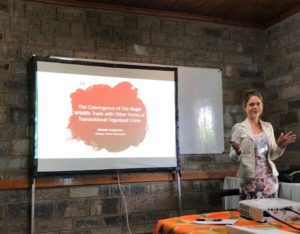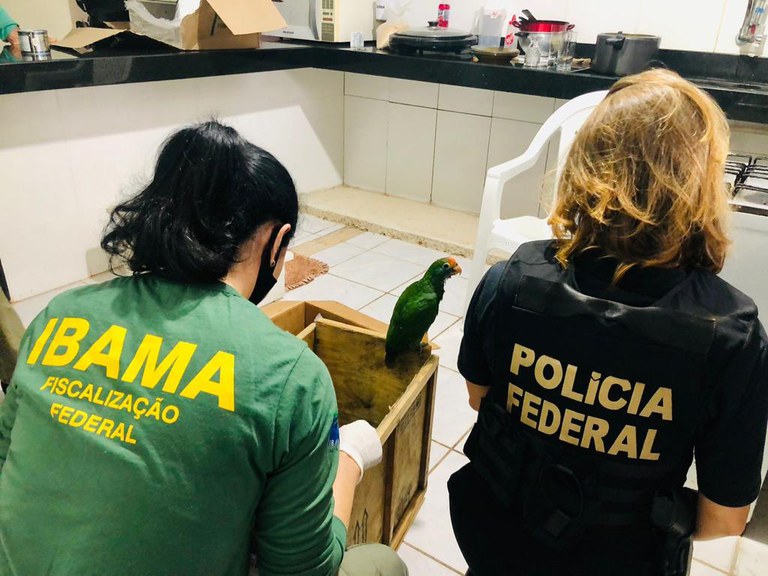Scientists at the University of Waterloo in Canada have analyzed 150 studies published worldwide since 2000 and found that drug trafficking is the crime most associated with the illegal wildlife trade. The study, Illegal wildlife Trade and Other Organised Crime: A Scoping Review, published in December 2021 in the journal of the Royal Swedish Academy of Sciences, indicates that wildlife smuggling can be used to cover up the illegal drug trade. Brazil serves as an example with hundreds of criminal groups involved in the illegal wildlife trade, and who are known to authorities to engage in other criminal activities, including drug and arms trafficking.
“Drug trafficking networks in Brazil will use existing distribution tactics for drugs to also move wildlife. Our data suggests that organized crime convergences in Brazil may occur more frequently in the illegal trade of birds and reptiles. Criminal groups involved in narcotics trafficking in Brazil have established a notable role in the illegal supply of wildlife to Europe and North America,” the study’s lead author Michelle Anagnostou told Diálogo.
According to the author, of all the serious and organized crimes identified in the research, the merging of drug trafficking and illegal wildlife trade were reported to converge most. “Drugs and wildlife can often be smuggled together in the same shipments, and in some cases, wildlife is used to camouflage drug contraband. In addition to diversified criminal groups, drug trafficking can converge with the illegal wildlife trade in a number of other ways, such as the barter trade of wildlife in exchange for illicit drugs, in a cashless transfer of illegal goods,” Anagnostou said.

The researcher says that in some cases wildlife traffickers may be the end consumers of illegally traded species, especially exotic animals such as big cats, which are used as a symbol of power and wealth. “Finally, territorial criminal groups, such as narco-insurgents, can impose a ‘tax’ on other illicit groups to traffic wildlife through a territory or port that they control, as a way to supplement their income,” Anagnostou added.
Freeland Brasil, the South American branch of the Freeland Foundation, an international organization that combats wildlife and human trafficking, said there are reports in Brazil that cites the use of the same drug trafficking routes, the corruption of the same agents, the use of animals to conceal drugs or the odor of drugs, and that the same traffickers carry out both types of trafficking.
“There are regions in which cross-border smuggling is controlled by criminal organizations where hardly any trafficking could be carried out without their knowledge. Finally, there are cases of drug trafficking from one country to another with the same traffickers returning to their country of origin with illegal wild animals,” Freeland Brasil told Diálogo in a statement.
According to the organization, the species smuggled vary based on the purpose they serve and the consumer market. The species most trafficked domestically are different from those smuggled transnationally. Songbirds; turquoise-fronted parrots; reptiles such as turtles, tortoises, iguanas, and some snakes; and, to a lesser extent, macaws, small primates, felines, and others, are among the animals smuggled on Brazilian territory. The animals smuggled internationally vary from ornamental fish to amphibians, various reptiles, macaws, and parrots, especially the most threatened and/or rare species.
Anagnostou believes that wildlife trafficking is one of the greatest threats to biodiversity worldwide, which can disrupt the delicate balance of ecosystems, as many endangered species are being hunted to the brink of extinction. “[It] is also a source of introducing invasive species, such as through the intentional release of unwanted exotic pets, which can then out-compete native plants and animals. The current rates of illegal harvesting and trafficking of wildlife also poses serious harm to people, including threats to sustainable development. Wildlife crime extraction deprives local communities of wildlife resources that provide subsistence, cultural, and spiritual benefits,” she said.
The United Nations Environment Programme estimates that, discounting the illegal trade in fish and timber, wildlife trafficking generates up to $23 billion annually.









